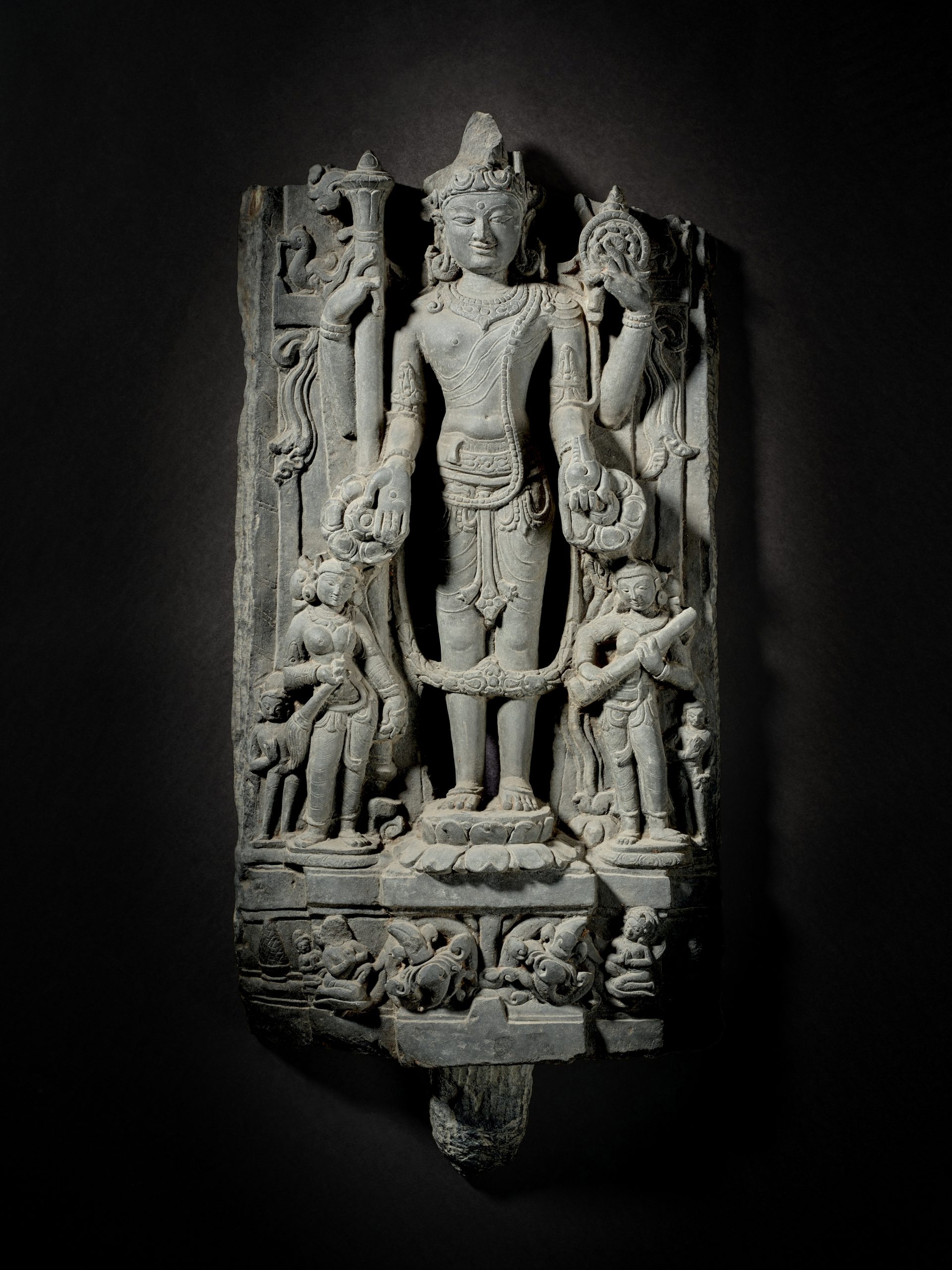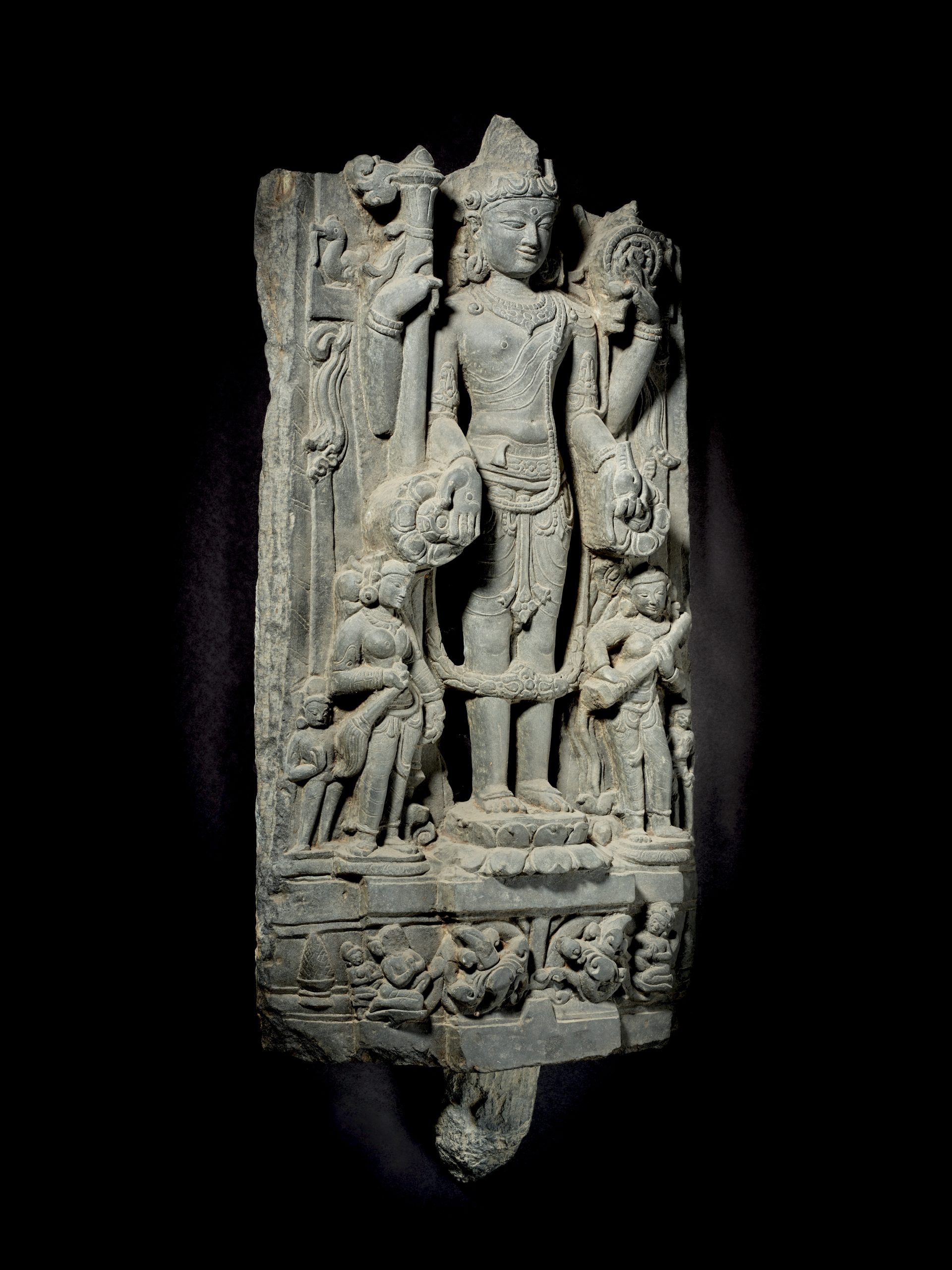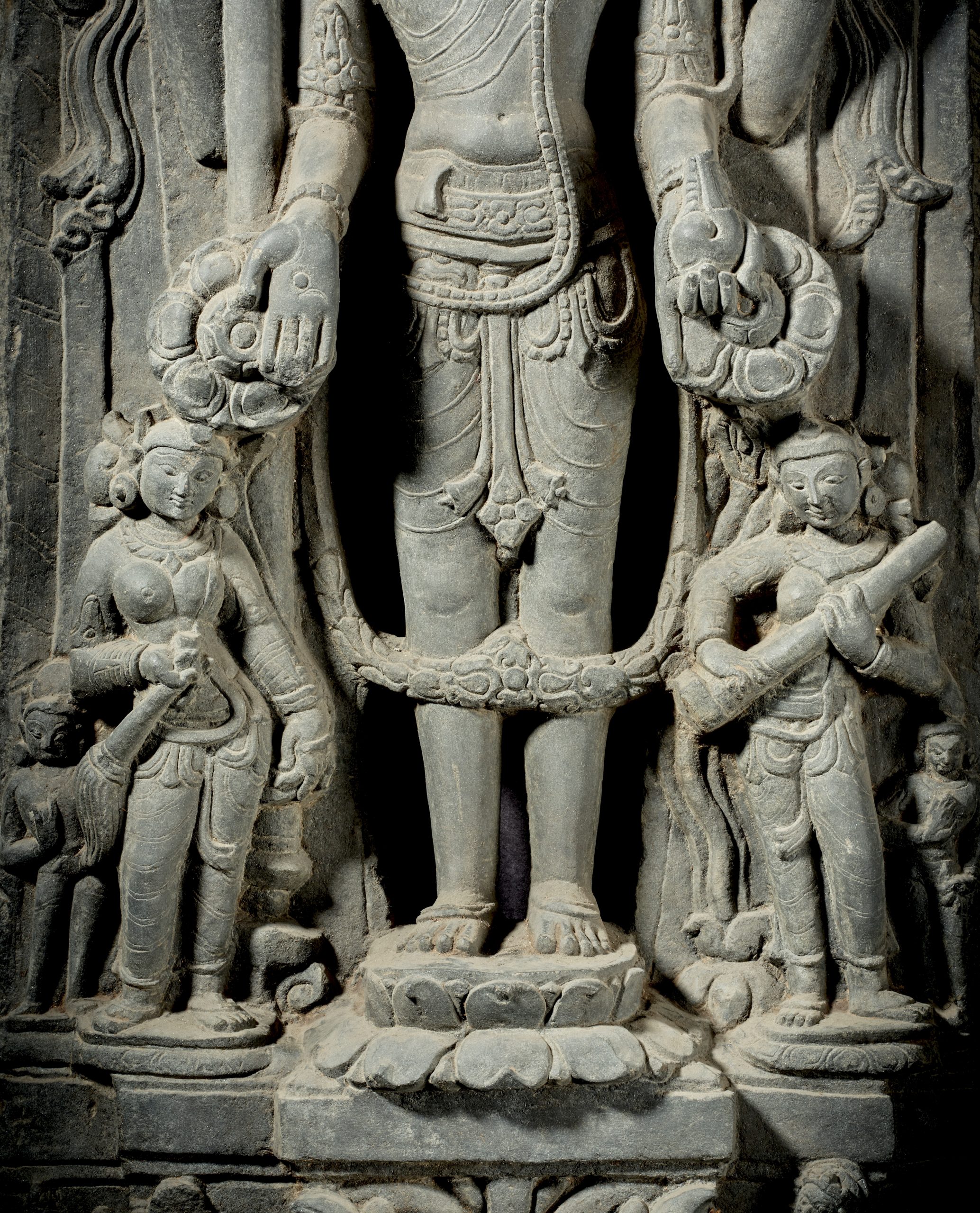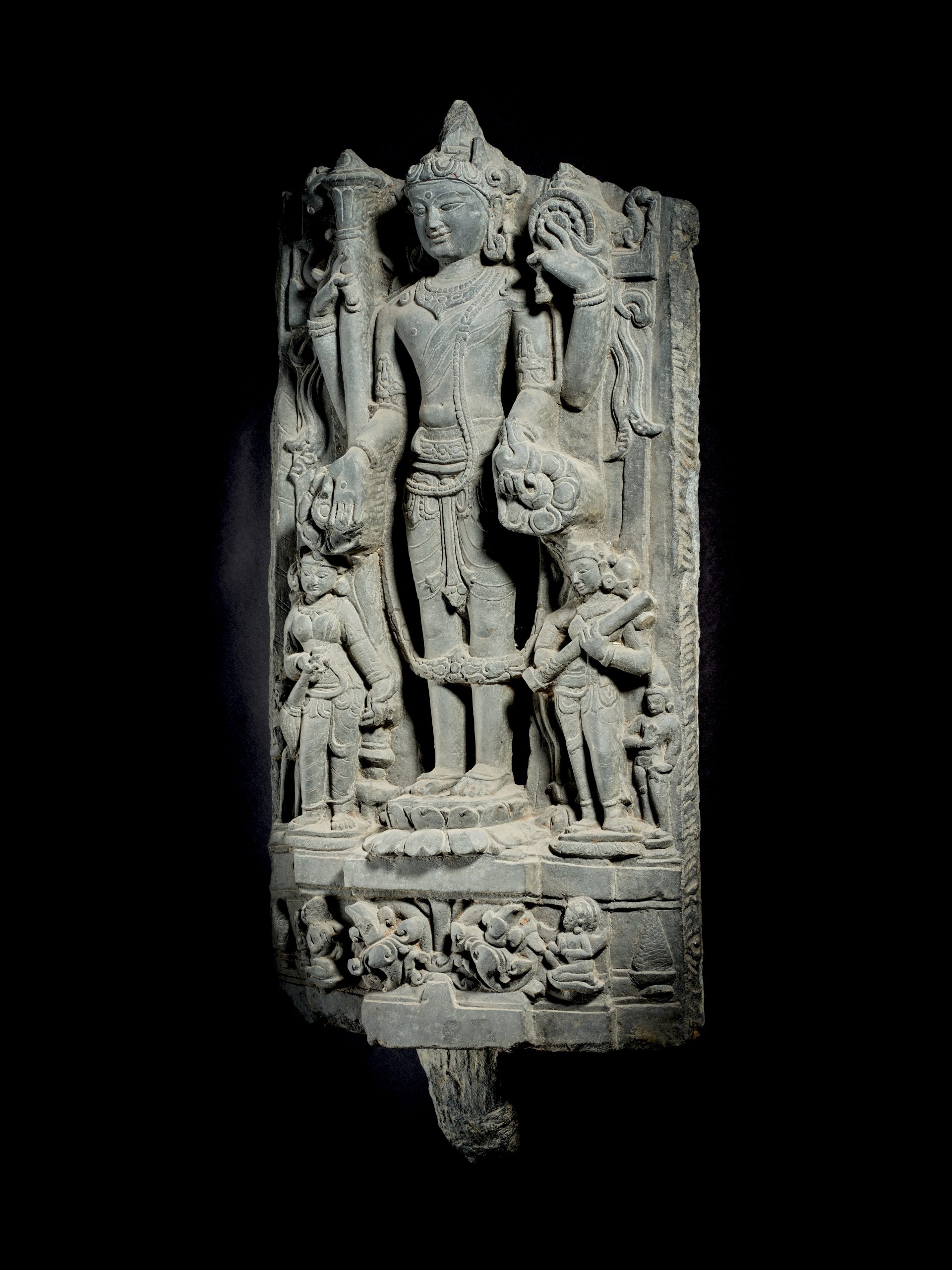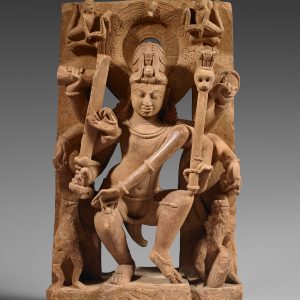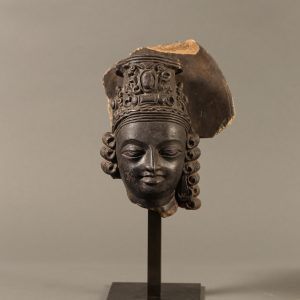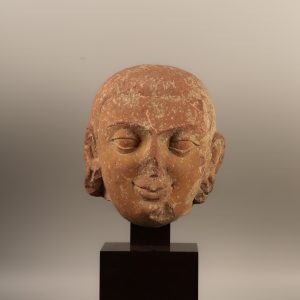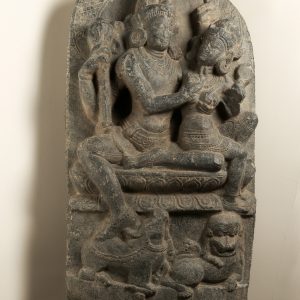Stele of Visnu
Black stone
Eastern India
11th-12th century, Pala period
H. 56 cm
Description
It is a representation of Viṣṇu Vasudeva, the supreme god, wearing the royal tiara (kirīta). Viṣṇu can be identified by the symbols he holds in his hands: the mace (gadā) in his raised right hand and the wheel (cakra), a particularly fearsome throwing weapon, in his raised left hand. With his other right hand, he makes the gesture symbolising the gift (varadamudrā).
Following the standard iconography for this type of representation, Viṣṇu is surrounded by his two wives Lakṣmī and Sarasvatī , sculpted in dynamic postures that contrast with the formal rigidity of his own figure. To Viṣṇu’s right is Lakṣmī, goddess of good fortune, holding a whip, the symbol of royalty and happiness. To her left is Sarasvatī, goddess of knowledge, wisdom and the arts, who can be recognised by the stringed instrument (vina) she carries. Two small figures next to the goddesses represent personified attributes of Viṣṇu.
Viṣṇu is standing on a pedestal decorated with lotus flowers. On the lower part of the stele, there is a female divinity worshipping the god. The god wears a long dhoti falling in parallel folds over her ankles, which is held at the waist by a decorated belt. We can see the richness and finesse of the jewellery on his chest, arms and ears. This magnificent stele, still in excellent condition, is admirable for its fluid, elegant composition.

